Acupuncture Got an Arthritic Pup Back on His Paws
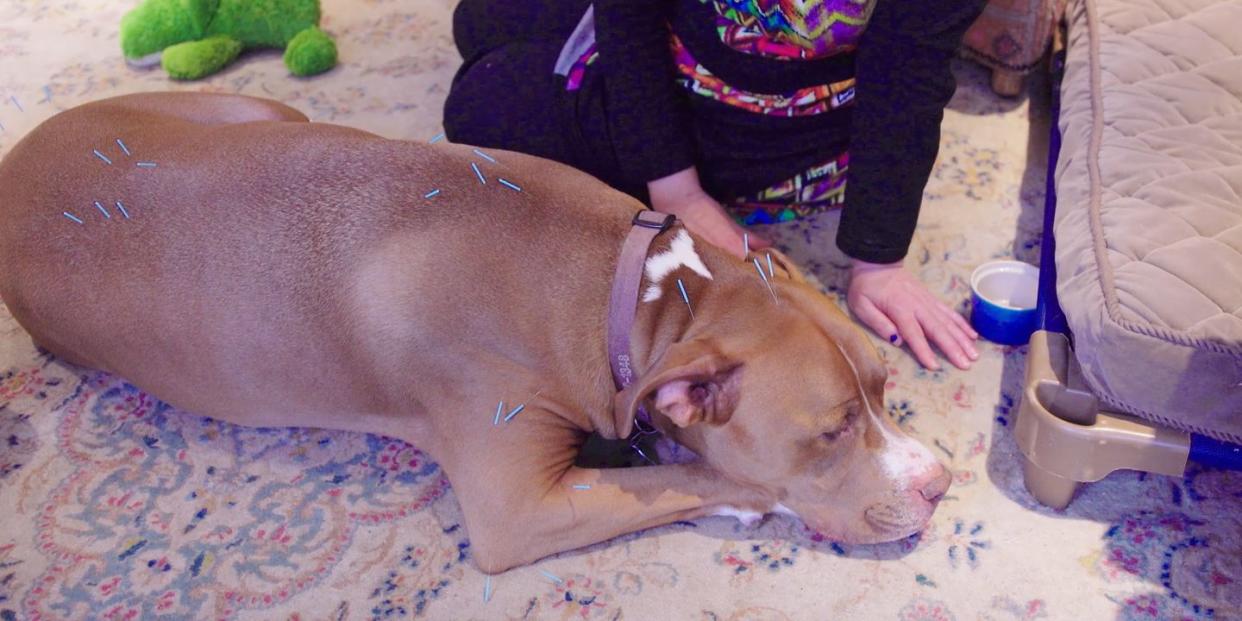
On a typical Monday, Dr. Jeffrey Levy is rushing around his New York City apartment, preparing for his first visit of the day. He gathers his supplies, reviews his patient's file, and hops on the subway. When he arrives at the home, he is greeted by his patient, who immediately bounds towards him and begins licking his face. Sunny, a 127-pound American Staffordshire Terrier and Great Dane mix, will be receiving an acupuncture treatment today.
Sunny may be large, but her adrenal glands are smaller than a Chihuahua's, owner Sally explains. "It kind of sets her system at an imbalance." She's exuberant for the first few moments after a visitor arrives but drops to the floor to rest soon after.
In acupuncture, points in the body are stimulated by inserting small needles into the skin, Levy says. The process is said to help alleviate pain and emotional distress. It's been around for centuries, though over the last few decades, it's had a surge in popularity. Celebrities like Sandra Bullock, Jim Carrey, and Robert Downey Jr. swear by it.
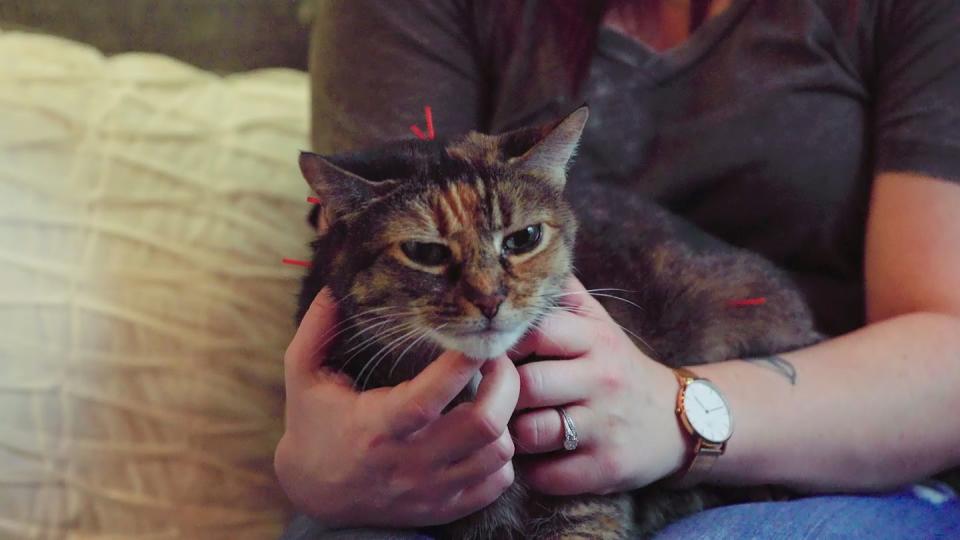
Being poked by multiple needles at a time may not sound like the best way to spend an afternoon, but it's not quite like that. The needles used in acupuncture are very thin. They're eased in, giving the client a sensation of pressure being applied versus a sharp poke. Most importantly, the animals don't feel pain during the process.
"Naturally, animals might be a little curious when they see you working with the needles as an acupuncturist, but most often the insertion of needles goes unobserved," Levy says.
Levy first became interested in acupuncture while in veterinary school in Mississippi. He watched as other veterinarians used acupuncture on older horses and other work animals. After the animals finished treatment, they would have a burst of energy, with their symptoms seemingly reduced. Inspired by his observations, he began to study acupuncture more seriously and was eventually certified.
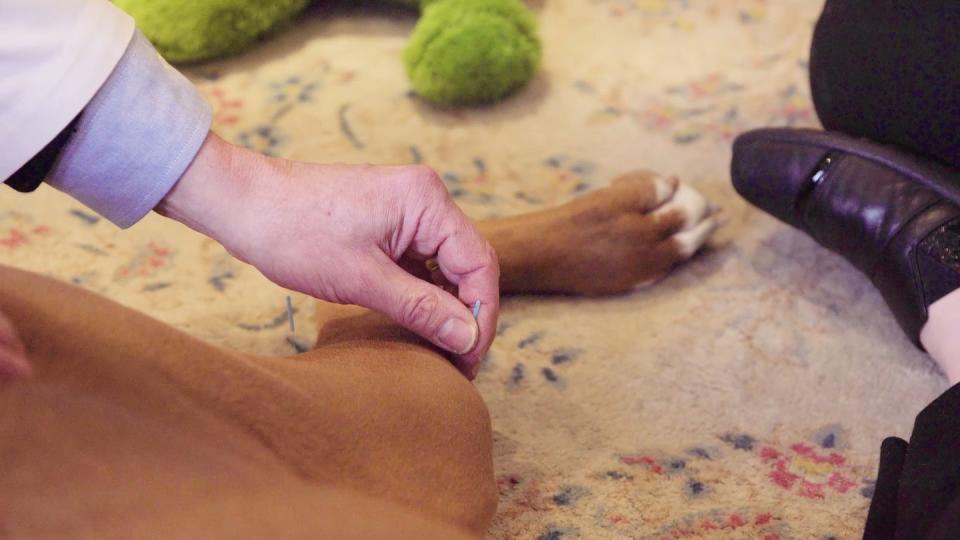
These days, Levy's practice is primarily focused on providing acupuncture and palliative care to animals in their homes. A house call is more personalized because clients get the same doctor each time, he explains. The familiarity of a pet's bed, a favorite toy that's too big to bring along - all of these things help to achieve a special level of comfort that's difficult to find in a clinic. Additionally, animals don’t experience the stress of traveling to an appointment.
Before Levy begins the session, he checks in with Sally for the latest updates on her condition. Sunny has been struggling with seasonal allergies and arthritis in her shoulder, Sally says.
Levy uses this information to choose the points that he will target during the acupuncture. The first needles that go in are Governing Vessel 20 – the calming points. As soon as these two are in place, Sunny begins to settle down and relax. Her head rests on her front paws, and Sally strokes her back.
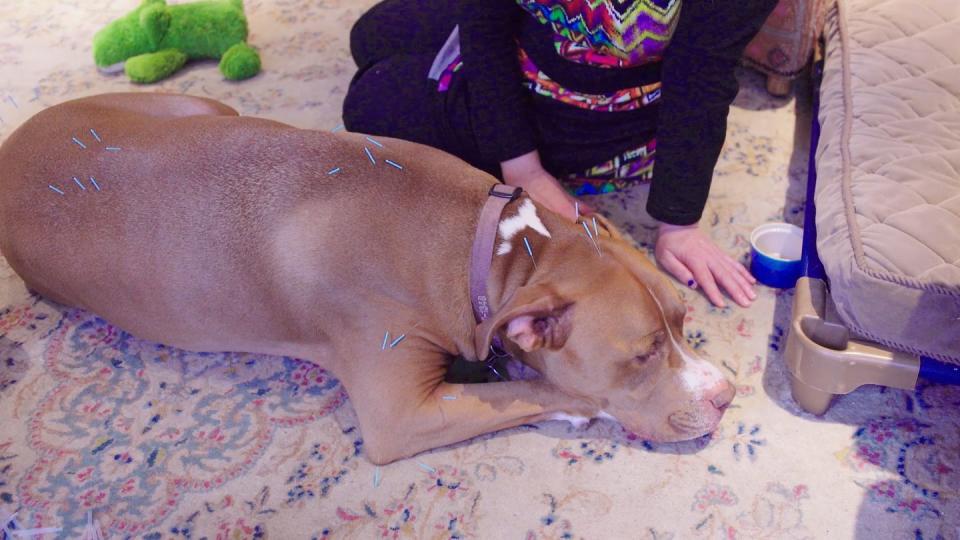
Levy continues to insert needles into various points on Sunny’s body. He places one called Stomach 36 on the back of her leg. "It's like flipping the switch for the whole treatment," he says.
Sunny hardly flinches. She's too busy eating treats, her eyes a little glazed over. Soon, she starts to nod off. This is perfect timing for Levy. The needles have to stay in place for 20 minutes, and Sunny is able to rest while her treatment is activated.
"Some pain medications can make her nauseous, or other medications make her lethargic," Sally says. "I've only ever seen positive results from acupuncture."
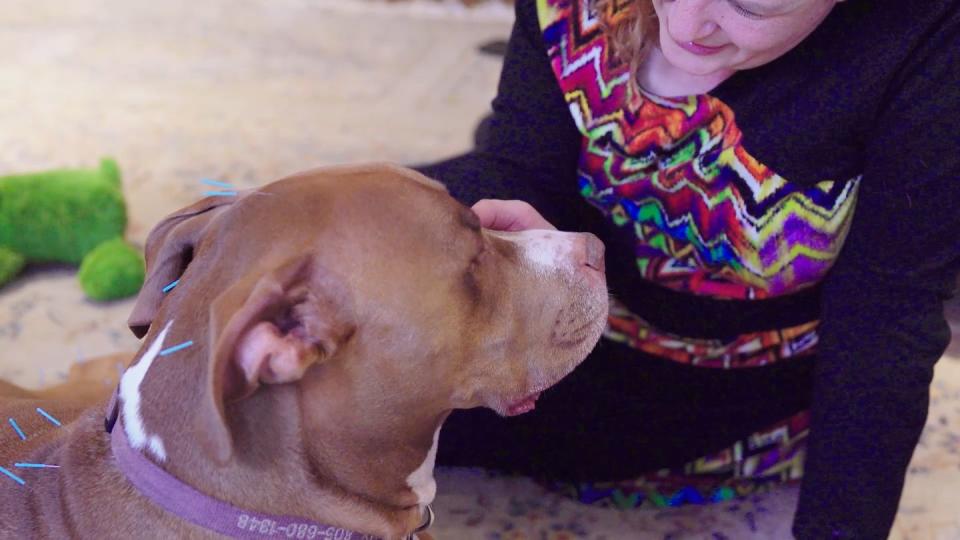
Twenty minutes pass and Levy carefully removes the needles. Sunny hardly stirs. As the last needle is taken out of Sunny's back leg, she hops up as if she's greeting Levy for the first time.
"How do you feel?" Levy asks Sunny. His question is returned with a flurry of puppy kisses.
Though some may have doubts about alternative medicine, Levy measures its success by his patients' behavior.
"The most rewarding comment I hear is when somebody tells me their pet is doing something that they haven't done in a long time," Levy says. "'Fluffy played with that yellow squeak toy in the bottom of the pile that she hasn't pulled out in six months. Doc, my pet is feeling better.'"
You Might Also Like

